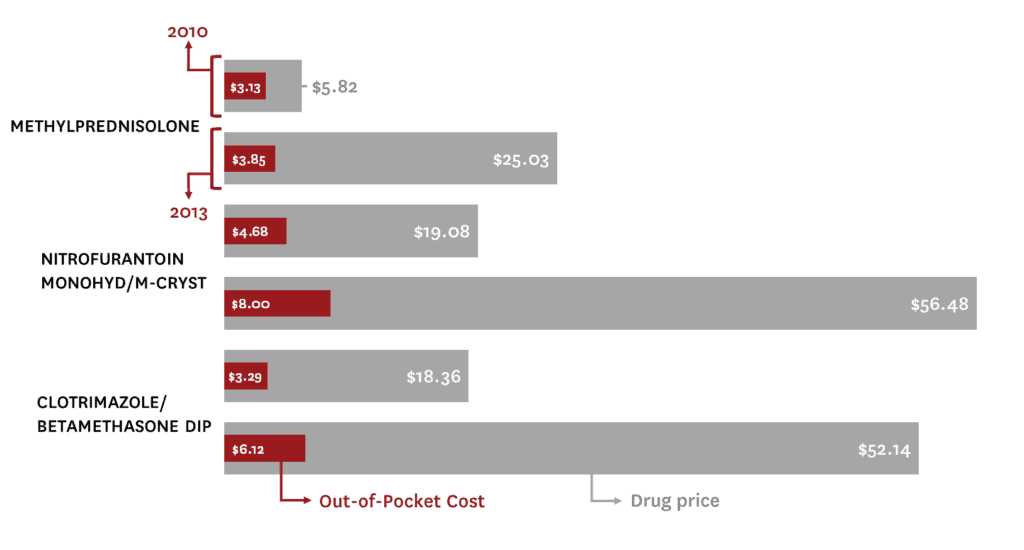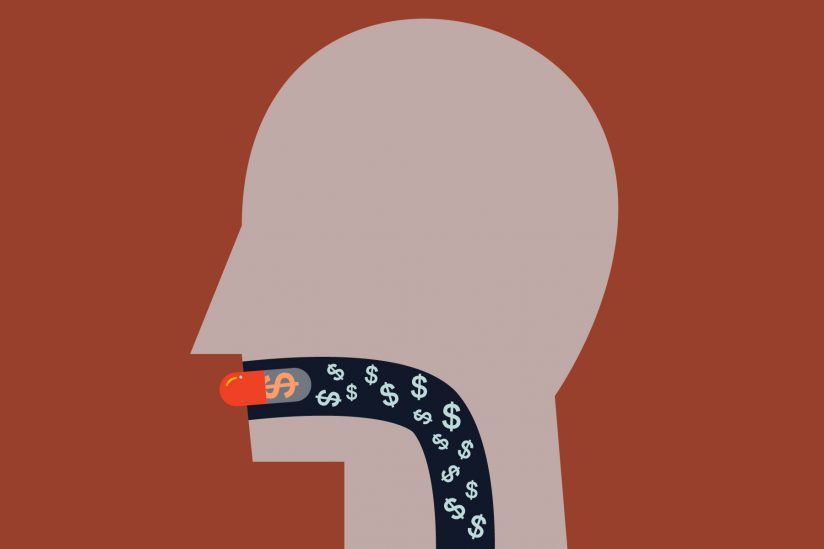A new USC study reports that sudden price spikes for some generic drugs — such as the recently reported increases of a decades-old generic heart medication and an antibiotic — are becoming more common.
The study from the USC Schaeffer Center for Health Policy & Economics, published in the October issue of Health Affairs, shows that the portion of generic drugs that at least doubled in price year-over-year represents a small but growing share of the market: from 1 percent of all generic drugs in 2007 to 4.39 percent in 2013.
“In most cases, this reflects an emerging strategy by generic manufacturers to identify and enter therapeutic areas with limited competition and raise prices substantially,” said Geoffrey Joyce, the study’s lead author and Schaeffer Center director of health policy. Joyce is also an associate professor at the USC School of Pharmacy and chair of the school’s pharmaceutical and health economics department.
For consumers, this can mean soaring costs to purchase some drugs that are life-savers, sparking public outrage and leading many to question whether the market — which has historically functioned well — is still working.
“Generic drugs are by definition homogenous products so there isn’t a lot of room in the industry for innovation or differentiation.” -Geoffrey Joyce
The generic drug market, which comprises about 90 percent of the prescriptions filled nationwide, has historically produced drug prices that typically decrease over time and tend to be lower than other countries.
Small share of drugs had big price hikes
The researchers measured annual price changes between 2007 and 2013 using data from Medicare Part D. They assessed both the distribution of annual price changes across all generic products as well as price changes for the top 20 generics that had dramatic increases.

In aggregate, prices for most generic drugs declined over the years analyzed. Yet the fraction of drugs with prices that at least doubled grew by more than 400 percent: from just 1 percent in 2007 to over 4.39 percent in 2013. And of the 20 most widely used generic drugs that at least doubled in price between 2010 and 2011, three had price changes of over 500 percent, including one drug with a price increase of 2,573 percent.
Characteristics of the drugs with large price increases were varied. In general, they are not commonly prescribed, they are used to treat a mix of both chronic and acute conditions and they were relatively low-cost generics before the price increase.
The authors assert that in a majority of cases, large price increases are due to a lack of competition within that class of drug rather than supply shortages. They found that once prices increased, they persisted for the next three to five years, which points to issues in market competition rather than supply shortages that would be resolved on a more compressed timeline.
“Generic drugs are by definition homogenous products so there isn’t a lot of room in the industry for innovation or differentiation,” Joyce said. “Buying competitors or going into a therapeutic class with no competitors probably makes good business sense in terms of increasing profits, but it points to weaknesses in the market overall that should be corrected by policy or regulatory oversight.”
Patients’ out-of-pocket spending increased minimally on drugs affected
The researchers also looked at how these price increases affected out-of-pocket spending by patients. They found that patients’ cost-sharing tended to be low and increased much more minimally than the price increases for the drug, even when the price hikes persisted for more than one year.
For example, the most widely used drug experiencing a large price increase was a steroid used to treat inflammation. Though the price increased by over 350 percent between 2010 and 2011, patient out-of-pocket spending increased just 3 percent in 2011 and 23 percent over a three-year period.
This does not mean patients were unaffected by the price hikes. While copayments increased only modestly, the researchers noted that insurers might respond to sustained price increases by raising premiums or excluding the drug from the formulary. Patients may also be affected if pharmacies decide to stop carrying some generic drugs if reimbursements do not readily adjust to higher acquisition costs.
Policy changes and oversight required to combat rising prices
Joyce and his colleagues pointed to a number of legislative and regulatory changes aimed at introducing more competition that should be considered by policymakers. The authors suggested that the Federal Trade Commission (FTC) should more rigorously analyze mergers and takeovers by drug companies, and what these mergers mean for specific classes of drugs rather than the market overall.
Another approach would be to allow temporary importation from countries that follow drug safety standards comparable to the United States. This would be a short-term policy only for off-patent drugs until a new generic had been approved.
In addition, while the FTC oversees market competition issues, the researchers suggested the Food and Drug Administration (FDA) could take action to improve the generic market. The researchers pointed to signs of positive change in this regard: The FDA has initiated new rules that require prioritized review, including action within eight months for drugs used to treat conditions in which there are no more than three approved products.
The study was co-authored by Laura E. Henkhaus, Laura Gascue and Julie Zissimopoulos. Funding for the research included the National Institutes of Health and the National Institute on Aging (award nos. NIH/NIA R01-AG-29514, NIH/NIA P01 AG33559-01A1 and NIH 1 RC4 AG039036-01). In addition, Henkhaus was supported by a USC School of Pharmacy Fellowship and a Schaeffer-Amgen Pre-Doctoral Fellowship.


